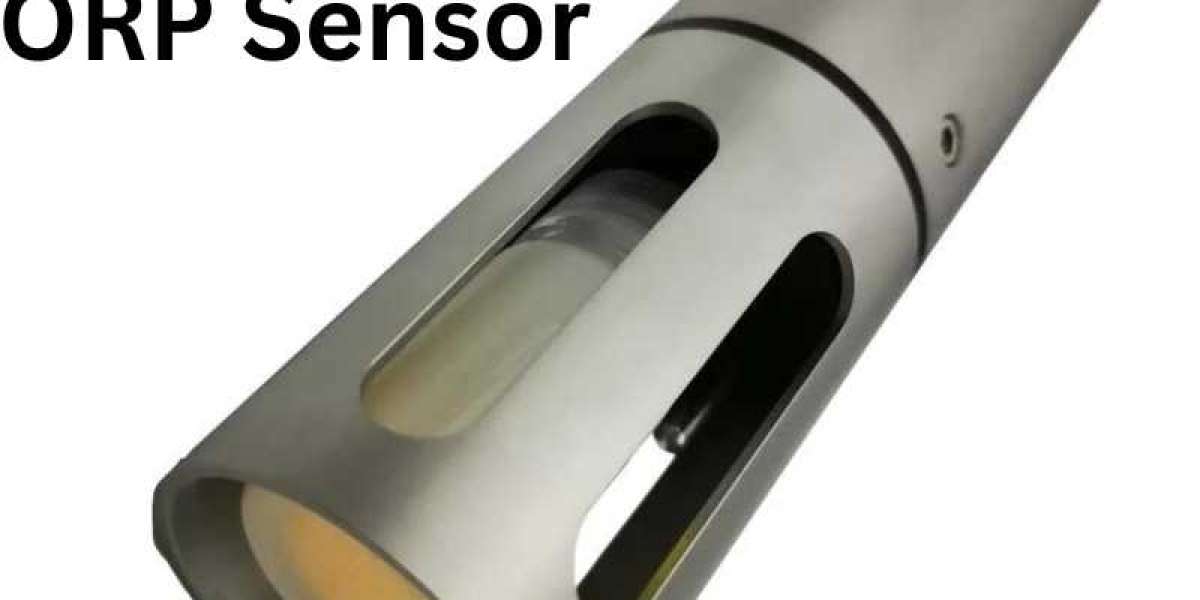These sensors are instrumental in determining the overall chemical balance of water and help industries, municipalities, and water treatment facilities keep their systems running smoothly. This blog delves into the significance of ORP sensors, how they work, and their applications.
What is ORP?
Oxidation-reduction potential (ORP) is a measure of the ability of a solution to either release or accept electrons during chemical reactions. This balance between oxidation (electron release) and reduction (electron acceptance) influences water's chemical composition. ORP is measured in millivolts (mV), with higher values indicating a greater potential for oxidation, and lower values suggesting a more reductive environment. This measurement is crucial in determining the effectiveness of various processes, such as disinfection, in water treatment.
How ORP Sensors Work
ORP sensors typically consist of a reference electrode and a measuring electrode. The reference electrode maintains a stable potential, while the measuring electrode reacts with the ions present in the water. When water comes in contact with the measuring electrode, a voltage is generated based on the oxidation or reduction occurring. This voltage is then translated into a reading of the ORP, which provides real-time insights into the chemical state of the water.
The value of ORP can give a snapshot of the water's ability to neutralize contaminants, disinfect harmful pathogens, and maintain a balanced ecosystem. For example, in pools and spas, high ORP levels suggest effective chlorine levels, while low ORP might indicate insufficient sanitization.
Importance of ORP in Water Quality Monitoring
ORP is a vital indicator in various industries for monitoring water quality. In water treatment, ORP sensors help determine when to add chemicals such as chlorine or ozone to purify the water. Maintaining proper ORP levels ensures that the water stays free of bacteria, viruses, and other pathogens, while also preventing the formation of harmful by-products.
In aquaculture, ORP sensors are used to monitor oxygen levels, which are essential for fish and other aquatic organisms. Proper ORP values ensure a healthy environment by controlling the balance of dissolved oxygen and waste products like ammonia. ORP also plays a role in industrial wastewater treatment, where it helps ensure that treated water meets regulatory standards before being released into the environment.
Applications of ORP Sensors
Water Treatment Facilities: ORP sensors are integral in managing the disinfection process. Water treatment plants use these sensors to monitor and control the addition of disinfectants like chlorine and ozone. By ensuring the right amount of disinfectant is added, ORP sensors help eliminate harmful microorganisms while avoiding overuse of chemicals that could be harmful to human health or the environment.
Swimming Pools and Spas: Maintaining safe water conditions in pools is vital for both hygiene and safety. ORP sensors help regulate disinfectant levels, ensuring the water remains free from bacteria and algae. Pool operators rely on ORP readings to optimize chemical usage, reducing maintenance costs and ensuring swimmers' health.
Aquaculture: In fish farming, ORP sensors are used to monitor water quality and ensure the wellbeing of aquatic species. Fish are sensitive to changes in water conditions, including oxygen levels and pollutants. ORP sensors help maintain an optimal balance in the water, preventing disease outbreaks and promoting growth.
Industrial Processes: Industries such as food and beverage production, chemical manufacturing, and pharmaceuticals require precise water quality management to maintain high standards of hygiene and safety. ORP sensors allow operators to closely monitor water conditions, ensuring consistent product quality and compliance with industry regulations.
Benefits of ORP Sensors
- Real-Time Monitoring: ORP sensors provide continuous, real-time data, allowing operators to make immediate adjustments to water quality. This timely intervention is especially important in settings like water treatment and aquaculture.
- Cost-Effective: By optimizing chemical usage, ORP sensors help reduce the amount of chemicals required for disinfection, leading to cost savings. This also contributes to a more sustainable approach to water treatment.
- Easy Integration: ORP sensors can be easily integrated into existing monitoring systems. Their compatibility with other sensors and automated control systems enhances overall efficiency.
Conclusion
In summary, ORP sensors play an essential role in water quality monitoring by providing critical data on the oxidation-reduction balance of water. Their ability to monitor disinfection processes, optimize chemical usage, and ensure the safety of aquatic life makes them indispensable in industries ranging from water treatment to aquaculture. By investing in reliable ORP sensors, businesses and municipalities can ensure they meet environmental and health standards while contributing to the sustainability of water resources.


